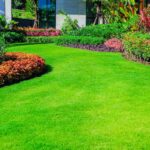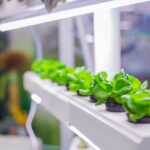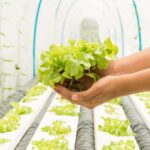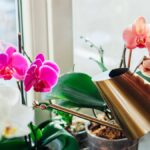Anubias is a popular genus of aquatic plants in the aquarium hobby, known for its hardy nature and attractive appearance. Native to Africa, these plants are highly versatile and can thrive in a variety of conditions, making them a favorite among both beginners and experienced aquarists. This guide will cover everything you need to know about caring for Anubias plants in your aquarium.
Types of Anubias
There are several species and varieties of Anubias, each with unique characteristics. Some of the most common include:
Anubias barteri: The most widespread species, known for its large, dark green leaves.
Anubias nana: A smaller variety, perfect for nano tanks or foreground planting.
Anubias coffeefolia: Recognizable by its rippled leaves that resemble coffee plant leaves.
Anubias afzelii: Features elongated leaves and is often used as a background plant.
Planting and Placement
Anubias plants are incredibly versatile when it comes to placement in the aquarium. They can be attached to various surfaces or planted in the substrate. Here are some tips:
Attaching to Hardscape: Anubias can be tied to driftwood, rocks, or other decorations using fishing line or aquarium-safe glue. Over time, the plant will naturally attach itself to the surface.
Substrate Planting: When planting Anubias in the substrate, be sure to keep the rhizome (the thick, horizontal stem) above the substrate to prevent rot. Only the roots should be buried.
Light Requirements
Anubias plants prefer low to moderate lighting. Too much light can cause algae to grow on the leaves, which can be detrimental to the plant’s health. Here are some guidelines:
Low Light: Ideal for slow growth and minimal maintenance.
Moderate Light: Encourages faster growth but may require more attention to prevent algae.
Water Parameters
Anubias are adaptable to a wide range of water conditions, but they do best in the following parameters:
Temperature: 72-82°F (22-28°C)
pH: 6.0-7.5
Hardness: Soft to moderately hard water
Fertilization and CO2
While Anubias plants are not heavy feeders, they do benefit from occasional fertilization. Liquid fertilizers and root tabs can provide essential nutrients. CO2 supplementation is not necessary but can promote faster growth and overall health.
Pruning and Propagation
Anubias plants grow slowly, but occasional pruning may be necessary to maintain their shape and health. Use sharp, sterile scissors to trim dead or damaged leaves.
Propagation is straightforward and can be done by dividing the rhizome. Simply cut the rhizome into sections, ensuring each piece has a few leaves and roots. Replant or attach the new sections as desired.
Common Issues and Solutions
Algae Growth: Reduce light intensity or duration, and consider adding algae-eating fish or shrimp to your tank.
Yellowing Leaves: This may indicate a nutrient deficiency. Try adding a balanced liquid fertilizer.
Rhizome Rot: Ensure the rhizome is not buried in the substrate and improve water flow around the plant.
Tank Mates
Anubias plants are compatible with a wide variety of tank mates, including:
Fish: Most freshwater fish, especially those that do not eat plants.
Invertebrates: Shrimp and snails can help keep the plant clean by eating algae and detritus.
Anubias plants are a fantastic addition to any freshwater aquarium due to their hardiness, low maintenance requirements, and aesthetic appeal. By following the guidelines outlined in this care guide, you can ensure that your Anubias plants thrive and enhance the beauty of your aquarium for years to come.
Quick Care Summary
Lighting: Low to moderate
Water Temperature: 72-82°F (22-28°C)
pH: 6.0-7.5
Fertilization: Occasional liquid fertilizers or root tabs
Propagation: Rhizome division
Common Issues: Algae growth, yellowing leaves, rhizome rot
With these tips, you’ll be well on your way to cultivating healthy and vibrant Anubias plants in your aquatic setup.
Advanced Tips for Anubias Plant Care
For aquarists looking to take their Anubias plant care to the next level, here are some advanced tips and techniques:
Optimizing Growth Conditions
Balanced Fertilization: While Anubias plants do not require heavy fertilization, maintaining a balanced nutrient regimen can promote healthier growth. Consider using a combination of macro and micronutrients to ensure the plant receives a well-rounded diet.
Substrate Considerations: If planting Anubias in the substrate, using a nutrient-rich substrate can provide additional benefits. However, remember to keep the rhizome above the substrate to avoid rot.
Enhancing Aesthetics
Aquascaping: Anubias plants are excellent for aquascaping due to their versatility. Use them to create natural-looking environments by attaching them to driftwood, rocks, or other decorations. Their slow growth and hardy nature make them ideal for creating stable, long-lasting aquascapes.
Combining with Other Plants: Anubias pairs well with other low to moderate light plants such as Java Fern, Cryptocoryne, and Bucephalandra. This combination can create a lush, diverse look in your aquarium.
Managing Algae
Algae-Eating Companions: Introducing algae-eating species like Amano shrimp, Nerite snails, or Otocinclus catfish can help control algae growth on Anubias leaves.
Regular Maintenance: Regularly cleaning the leaves with a soft brush or cloth can help keep algae at bay.
Avoid using harsh chemicals or treatments that could harm the plant.
Troubleshooting Common Problems
Melting Leaves: Occasionally, Anubias leaves may “melt” or deteriorate, especially when first introduced to a new tank. This is often due to acclimation stress. Ensure stable water parameters and give the plant time to adjust.
Pest Management: While rare, pests like snails or certain fish might nibble on Anubias leaves. Removing the pests manually or introducing natural predators can help manage the problem.
Creating Ideal Conditions for Specific Anubias Varieties
Different Anubias species may have slightly varying requirements. Here’s a quick overview of some popular varieties:
Anubias barteri var. nana: Thrives in low to moderate light and is perfect for small to medium-sized tanks. Its compact size makes it ideal for foreground or midground placement.
Anubias barteri var. caladiifolia: Known for its large leaves, this variety is best suited for background placement in larger tanks. It prefers moderate light and benefits from occasional fertilization.
Anubias hastifolia: With its distinctive arrow-shaped leaves, this variety adds a unique look to any tank. It prefers moderate light and can be placed in the midground or background.
Anubias plants are a resilient and beautiful addition to any freshwater aquarium. Their low maintenance requirements and adaptability make them a perfect choice for aquarists of all skill levels. By following the care tips outlined in this guide, you can ensure your Anubias plants remain healthy and vibrant, contributing to the overall beauty and stability of your aquarium.
Quick Care Checklist
Lighting: Low to moderate
Temperature: 72-82°F (22-28°C)
pH: 6.0-7.5
Fertilization: Occasional, balanced fertilizers
Propagation: Divide rhizome
Placement: Attach to hardscape or plant with rhizome above substrate
Common Issues: Algae growth, yellowing leaves, rhizome rot
With these advanced tips and detailed care instructions, you’ll be well-equipped to create a thriving underwater environment featuring the beautiful and hardy Anubias plants.






